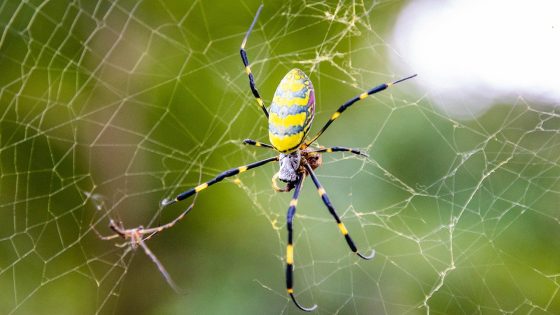SPANISH FORT, Ala. (WKRG) — If you blink, you’ll miss it. But if you’ve seen it, you may still be wondering, what is that?
Giant blocks of concrete, arranged in a circular pattern, that seem very out of place, standing right off the Causeway since the 1950s, just to the east of Five Rivers in Spanish Fort.
Students could get free Greater Gulf State Fair tickets through reading program
This curious-looking colossal concrete structure can be found on an island with an unusual name. How you pronounce it, depends on who you ask.
Rebecca Nelson, who grew up on Pineda Island, pronounces it “Puh-Knee-da,” but she told WKRG Anchor Cherish Lombard, “I’m not sure that the explorer pronounced it that way.”
Records show the island was named after the Spanish explorer, Alonso Álvarez de Pineda. He’s credited with being the first European to scout and map the Gulf Coast of Florida, Alabama, Mississippi, Louisiana and Texas in the 1500s.
Fast forward to 1956. That’s when architect Bertrand Goldberg started work on Pineda Island. He also designed Providence Hospital in Mobile, which also has that same spherical design. The developer, George “Red” Wilkinson, started building houses on the island, and Rebecca Nelson’s grandparents bought the first one!
Baldwin County uniforms, free lunch to be voted on at next school board meeting
“My parents lived in the duplex right across the street here,” Nelson said.
Wilkinson announced big plans for the island, with a vision of an upscale neighborhood, anchored by a resort with swimming, diving and wading pools, 170 cabanas, a bar, restaurant, health club, nursery, yacht club, dancing pavilion, teen club, racquet club, rod and gun club, bowling lanes, a marina, squash and handball and tennis courts.
Nelson said, “I believe it was going to kind of be sort of like one of those Gidget-type movies where you’ve got the cool pool and the hangout and shops, restaurants, the hotels; Howard Johnson’s and Holiday Inn moved here, and so there were companies. There was a little country store and then a gas station that came in.”
For a little while, the part that was actually built was great!
Divers remove over 7,000 lionfish during ‘world’s largest lionfish tournament’
“They had some sort of concession and various things and they had swim meets here,” said Nelson. “The Olympic-sized pool, when it was built, was supposed to be the largest, longest pool south of Nashville, and I believe it was at the time.”
David Reynolds remembers driving from Mobile to use that pool.
“My brother and two or three other friends and me got together,” he said. “We lived in Cottage Hill and he said, ‘We’re going to need a pool.’ I said, ‘Let’s go!’ and we came down, paid a quarter each to get in, and it was the best pool in the area.”
He said he swam there several times before the pool closed.
Mobile Sports Hall of Fame to induct Captain Munnerlyn
“It was perfect! It had a high dive and a low one, and we would go, we liked to get on the high end, but when you go over that thing, it would hurt you, just the impact on the water was pretty strong. And it would make you go deeper in the water and deeper you went, the more your ears would hurt,” Reynolds said.
Those days hanging out at the pool ended abruptly, and the entire idea of the Pineda Island resort became frozen in time because the developer gave up and moved to Florida. But why?
“I heard that the reason it got shut down was a child climbed the fence they had around it,” Reynolds said. “There was still a fence around there and drowned in the pool from what I heard. And then that was the end of the pool.”
There are also stories that the developer bit off more than he could chew and couldn’t afford to see his vision through. Whatever the reason, Wilkinson gave Nelson’s grandfather, D.V. Williams, the opportunity to purchase some of the houses and lots with one stipulation.
Truck catches fire at Airport-Schillinger intersection: MFRD
“He included this (the concrete structure) in the sale,” Nelson said. “It was take it or leave it.”
After the sale of Pineda Island, this structure faded away in a sense; nature took over.
“It was pretty grown up,” Nelson said. “We came over here with my grandmother in knee socks and protective clothing and picked blackberries and dewberries and that sort of thing.”
She remembers her grandparents working to clean it up, saying, “All of the grass that you see, all of the trees, basically, that you see my granddad either seeded or planted. This was all sand, mostly cactus. You couldn’t walk barefooted through here.”
Quimby Drive in Mobile County abruptly shut down — what you should know
Many of the houses on Pineda Island are still owned by Nelson’s family and used as rental properties. Eventually, they sold the pool area to a man who used it to store equipment. Nelson said her family didn’t tear it down because it would have cost too much.
So the large concrete reminder of what almost was has been a fixture since the 1950s, surviving hurricanes, flooding, and property transfers.
The skeleton of a “lost resort” on an island with a strange name.
Copyright 2024 Nexstar Media, Inc. All rights reserved. This material may not be published, broadcast, rewritten, or redistributed.
For the latest news, weather, sports, and streaming video, head to WKRG News 5.
Source Agencies



